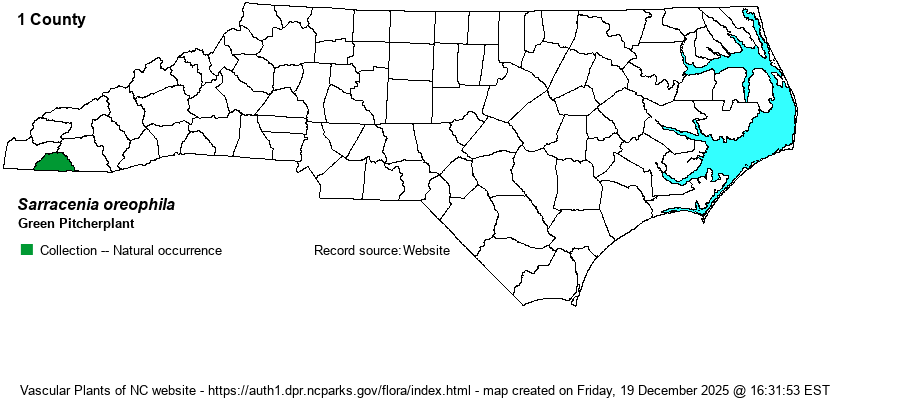| Author | (Kearney) Wherry | |
| Distribution | Known only from two sites in fairly close proximity in Clay County, in the extreme southwestern part of the Mountains. These were discovered in 1986 by Tom Govus, in a partial natural area survey of this county. Only one population still remains extant.
This species has a very small range, limited now to just three states -- southwestern NC, northern and central GA, and northeastern AL. It is likely extirpated from eastern TN, according to Weakley (2018). | |
| Abundance | Extremely rare, though the extant population, surveyed almost annually now as it is a Federally Endangered species and has been protected on a preserve owned by The Nature Conservancy, is doing well with management. As it is Federally listed, it also carries a State Endangered status as well. | |
| Habitat | This is a species of seepage bogs and damp, open ground near lake or pond shores. The extant site in the state is a gently sloping "field" that has some seepage within it. Certainly, for the species to survive, woody species need to be knocked back, by various means. |
| Phenology | Blooms in April and May, and fruits in June and July. | |
| Identification | This species looks very similar to the much more common S. flava, which in NC is limited to the Coastal Plain and Piedmont. It has the similar tall (around 2 feet high) and tubular leaves that forms pitchers, a broad rounded hood a few inches above the pitcher opening, and a large single bright yellow flower with 5 drooping petals. However, this species has the flowering scape taller than the leaves, such that the flower is raised somewhat above the top of the trumpets, as opposed to a flower slightly below the trumpet in S. flava. The other feature is this species' many phyllodia (non-pitcher leaves) at the base, each of which is strongly falcate (curved); S. flava lack phyllodia or has just a few and these are straight or slightly curved. Though a biologist still might be able to find a new population of S. flava, it will likely be difficult to find a new population in NC of S. oreophila. At least, no full-scale survey of natural areas and rare plants for Clay County has been conducted by the NCNHP, and thus perhaps someone could turn up a new population in that county or in adjacent Cherokee County, though the latter county has had a recent natural area survey done. Note that, according to the Flora of North America website species account, "the pitchers do not last well into the summer and usually die down completely by mid-July". Thus, persons looking for the species need to search between April and early July. | |
| Taxonomic Comments | This species was originally described in 1933, but it was generally not considered by most authorities as a valid species until much later in the 20th Century.
| |
| Other Common Name(s) | None | |
| State Rank | S1 | |
| Global Rank | G2 | |
| State Status | E | |
| US Status | LE | |
| USACE-agcp | OBL link |
| USACE-emp | OBL link |

